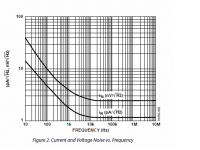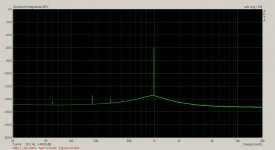And I am sure we can
If I make a 48kHz/24bit recording from vinyl, then I play analog vinyl and digital data through preamp with switchable inputs, levels matched - I can tell the difference. Same if I make a CD from vinyl and compare it directly to vinyl. It never sounds the same. What is my ADC good for if I can tell the difference, from imperfect sound source?
OK, that's fair enough, I accept that. The difference between the vinyl replay chain and the digital chain is huge in terms of circuitry.
Here in this test we have identical set ups where the change is just one active device. That change results in a massive change in the numerical specs. You've only to look at the distortion spectra to see that. A change far greater (I would assume) than you comparing the final files of your vinyl vs recorded chain.
No one has offered an opinion as yet on the most basic test... how they come across when simply listened to.
I have a whole tube of AD8022's.
Hi Jan, looks like this part was not designed for audio - pls see noise vs. frequency.
Attachments
Hi Jan, looks like this part was not designed for audio - pls see noise vs. frequency.
Looks like a video amp part. I concur, no good for audio.
1) what was the amplitude of the fundamental
2) what would be the load resistance
Please always provide complete information.
I already gave that information plus referred to David's complete spec info on another forum. Here it is on line #57469.
This particular test shown, I found from david, was at 100 Ohms and 2.7v rms. Looking for double that level, if possible.
Showing pretty good IC amp performance at -110-120dB at moderate loads doesnt get here. I could do discrete that good, myself. You guys are my experts. My hero's. What can you do for him?
THx-RNMarsh
Last edited:
The AD8022 looks like an interesting part, even for audio. It uses the standard (AD797 like) topology, but has a 20KHz open loop bandwidth. It is fast as well. I don't know how much crossover distortion it has, and the maximum power supply voltage can be a limitation, but I would consider it potentially a pretty good part.
Hi Jan, looks like this part was not designed for audio - pls see noise vs. frequency.
Oops - missed that graph...
Jan
The AD8022 looks like an interesting part, even for audio. It uses the standard (AD797 like) topology, but has a 20KHz open loop bandwidth. It is fast as well. I don't know how much crossover distortion it has, and the maximum power supply voltage can be a limitation, but I would consider it potentially a pretty good part.
With its high BW and very low distortion even towards 1MHz, I'd think xover distortion wouldn't be an issue.
But the graph PMA showed shows a high noise crossover frequency.
The '797 crosses over at around 100Hz, the AD8022 at a few kHz.
Jan
LT2:
File B sounds better to me, then C & D. Last, file A.
Sighted listening through headphones, 6-7 times
I will use DiffMaker to evaluate the differences between these files. I can post the results if you want.
George
I look at the open loop bandwidth.
Mr. Curl, ever seen other opamps with OLG remaining flat up to such a high frequency ?
(AD825 does 16kHz tops, at 15Vs, and a lot noisier)
Who cares about the noise? I look at the open loop bandwidth. Want something to sound extra good?
You just keep repeating this nonsense, and your posse eats it up. You saying who cares about noise, amazing.
I choose what has worked for ME over the last 40 years. I make discrete designs in a similar way that I try to choose IC's. I need jfet input (when possible), high open loop bandwidth, and low crossover distortion.
I make quiet phono stages, but not so quiet line stages, so what?
I make quiet phono stages, but not so quiet line stages, so what?
In case anyone is interested in technical input, these examples of high open-loop bandwidth in ordinary IC op-amps are all essentially a case of the trade-off of extra buffering or cascoding on the VAS was not worth sacrificing other specifications. Which is to say they all fall into the class of loading the VAS with a resistor to kill the open-loop gain is good.
- Status
- Not open for further replies.
- Home
- Member Areas
- The Lounge
- John Curl's Blowtorch preamplifier part II

